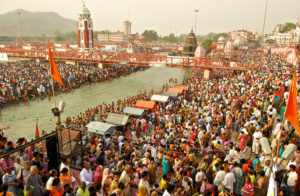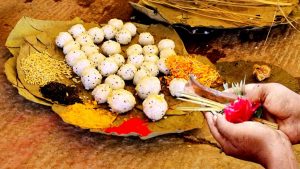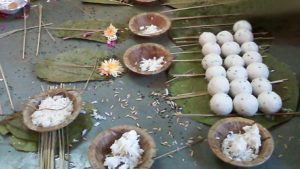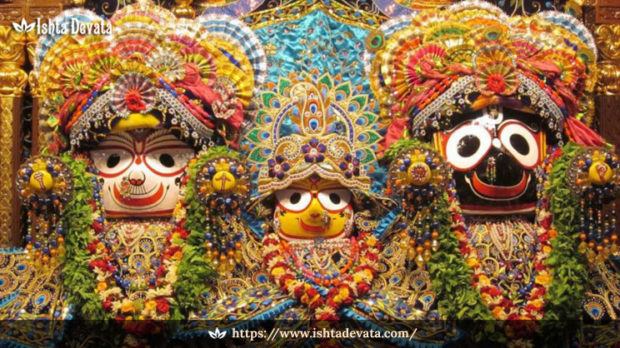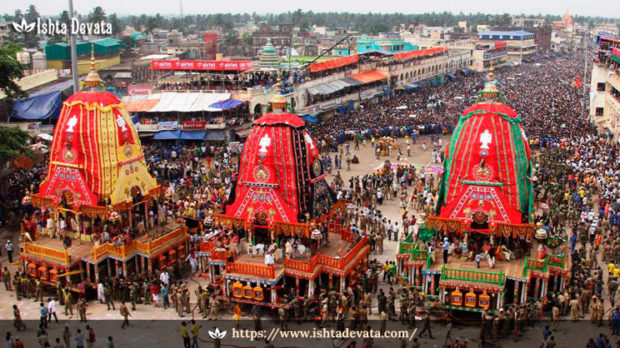2017 Puri Jagannath Rath Yatra – Date, Rituals & Significance
Puri Rath Yatra – 2017
The city of Puri in Orissa, India is most famous for the Rath Yatra (Car Festival ) held here every year. This renowned festival in Puri commences on the 25th June, Sunday 2017, this year and the return Car Festival or ‘Bahuda Jatra’ falls on 3rd July Monday 2017.
Puri Rath Yatra is also popularly called the ‘Chariot Festival’. This is one of the major festivals of North India which is celebrated on the ‘Dwitiya’ (2nd day) during the ‘Ashadha Shukla Paksha’ (the waxing phase of moon in the Ashadha month of the Hindu calendar). According to the Gregorian calendar, this festival falls in the months of June-July. This Ratha Yatra is primarily dedicated to Lord Jaganatha of Puri and is also known by other names such as the ‘Ghosa Yatra’, ‘Dasavatara Yatra’, ‘Navadina Yatra’ or ‘Gundicha Yatra’.
Rituals During Puri Rath Yatra
The preparations for this Ratha Yatra starts much earlier, which involves the construction and decoration of the Chariots by a number of volunteers. On the day of the Rath Yatra (Car Festival), the vigrahas (idols) of Lord Jaganath, Balabhadra and Subhadra (Lord Krishna’s Sister) are placed on their respective chariots, which are kept near Singhadwar. The deities are then carried to the chariots in a traditional ceremonial manner-first Sudarshana, followed by Balabhadra, Subhadra and Jagannath. Balabhadra and Jagannath are made to swing back and forth in a ritual called ‘Pahandi’.
The magnificent chariot of Lord Jagannath is known as Nandighosha, which is made up of 16 (sixteen) wheels. Its roof is beautifully decorated with yellow and red fabrics. The chariot of Lord Balabhadra (Balarama) is called the Taladhwaja and is built with 14 (fourteen) wheels. Red and green colour fabrics decorate the roof of this chariot. Subhadra Devi’s chariot is known by the name ‘Devadalana’ and has 12 (twelve) wheels. Red and black coloured fabrics adorn this well crafted chariot. Sudarshan is seated by the side of Subhadra in her chariot, while Madanmohan, another form of Lord Krishna, is placed on the Nandigosha along with Lord Jaganatha. Vigrahas of Sri Rama and Krishna are placed on Balabhadra’s chariot. These small idols of Lord Rama and Krishna are made of metal. Balabhadra’s chariot is the one that is pulled first, while Subhadra’s comes the second. Lord Jagannath’s chariot is the one that comes finally after which the chariots are taken to the Shri Gundicha Temple (Gundicha Ghar). This temple is considered as the deities’ aunt’s house, where they enjoy a nine days stay. The deities are then offered with numerous sweets and pancakes.
In case if any of the chariots fail to reach the Gundicha Ghar on the day of Rath Yathra, it is again pulled the following day. After the nine day stay at Gundicha Ghar, the Return Car Festival is celebrated. This involves the tradition of bringing back the deities along with their chariot to the Singhadwar area of Puri, where the Jagannath Temple is located. “Hera Panchami” is yet another important ritual performed on the 5th day (starting from and including the day of Car Festival). It is believed that Goddess Laxmi visits the Gundicha Ghar to see Lord Jagannath there. On the lOth day of this Rath festival, (i.e. the 11th day of the bright fortnight of Asadha) the deities are seen adorning gold ornaments and are dressed gracefully in their respective chariots that are parked in the Simhadwar area. On the same day, yet another ritual called ‘Hari Sayan Ekadasi’ is performed. On the following day i.e. the 12th day of the bright fortnight, important ceremony known as’ Adharapana Bhog’ is performed. A sweet drink is offered to the deities. On the following evening, all the deities are taken back to the temple in a grand customary procession, amidst thousands of devotees who had gathered to witness this auspicious event.
Significance of Puri Rath Yatra
The Puri Rath Yatra is one of the oldest festivals celebrated in India. Ancient religious texts like the Brahma Purana, Padma Purana, Skanda Purana and Kapila Samhita mentions about this extravagant festive celebrations. It is widely believed that those devotedly participating in this holy Rath Yatra is said to attain Moksha (Salvation).
Reach us to be a part of our whatsapp spiritual reminder group
